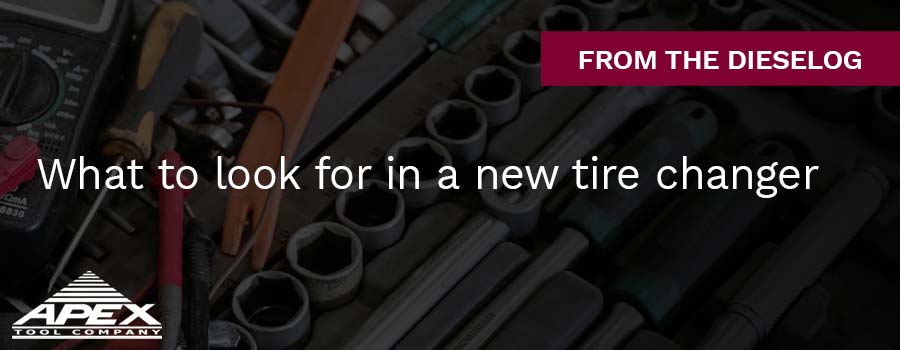Blog
What to look for in a new tire changer
With proper maintenance and repair, standard tire changers for steel rims and regular valve stems lasts for many years. However, fuel economy regulations, newer vehicle designs and trends are changing rim size and composition leading to an effect on tire changers as well. This is the age of touchless tire changers, but then it takes the user some getting used to.
Along with changing brakes and oil, repairing and changing tires is among the most common jobs handled by a light duty fleet maintenance facility. Modern vehicles have tires with aluminum rims that are soft, have stiff sidewalls along with TPMS or tire pressure monitoring system valve stems. Most of these can break if serviced improperly. A new tire changer must be able to handle these changes.
Should You Select A 110V Machine Or A 220V One?
One of the most commonly asked questions on tire changers is whether one should buy a 110V machine or a 220V type. Not that there is much of functional difference between the two and many shops have used one or the other without noticing any. Although both machines consume the same amount of power, the one with the higher voltage rating will run at half the amperage.
To put it in simple terms, power is a product of voltage supplied and the consumed current. Therefore, for producing the same power output as for a 220V unit, a 110V machine will consume double the amperage. However, installing a 110V tire changer is simpler as it does not require an electrician to intervene.
However, one clear differentiator exists between selecting a tire changer working on 110V from the one working on 220V. This is explained by Jeff Kritzer of BendPak, the global leader in capital equipment related to automotive repair, such as oil filter crushers, wheel and tire service equipment and lifts. The senior vice president of sales and marketing explains that a motor running on higher voltage has an advantage when starting under load.
Higher Voltage Equals Higher Torque
Servicing of heavy wall truck tires or wheels and tires with stubborn performances can cause the turntable on a tire changer to stall. A machine operating on 220V has a better chance of restarting and continuing after a stall. That makes the 220V machines more important, especially as new light duty vehicles now increasingly come with aluminum rims, TPMS sensors and most of them are of the run-flat variety of tires.
Most often, a tire changer needs a separate assist arm put up on the far side of the tire. A tire bar is then required to depress the bead in between the rim and the mounting head. The tire bar has to be readjusted by repeating the process when the user turns the tire by about 30-degrees or so.
While installing the tire, the turntable might stop turning as soon as the technician lifts his foot off the pedal. This may happen even if the rim has been secured properly and the bead has plenty of lubrication on it. Sometimes, the technician may need to take his foot off the pedal, as the tension from the bead can pull the mount head into the rim, causing damage. The technician may also need to stop for adjusting the tire bar to avoid tearing the bead.
Since the turntable needs to keep moving to prevent damage to the rim even as the bead gets tighter a 220V machine with proper assist arms is preferred. The technician can make adjustments freely knowing that the turntable will readily rotate afterwards. A struggling turntable may need another technician to help spin the tire, and a 220V machine makes the process safer and more efficient.
Future Requirements
Vehicle users desire large rims and fuel economy requirements need tires with low profiles. Both these requirements are affecting the type of tires that fleets now have to work with. Therefore, it is preferable to have a tire changer with a large turntable along with a tilt-back mechanism. This will allow accommodating not only the tires already in the marketplace, but also adaptable to the future thinner tires with larger rims.
According to Kritzer, when a fleet operation services mostly wheels and tires of light duty trucks and passenger vehicles, they typically need a tilt-back style changer with a standard swing-arm having a wheel clamping range up to 24-inches. Therefore, it is important to check the specific requirements before selecting the appropriate machine.

